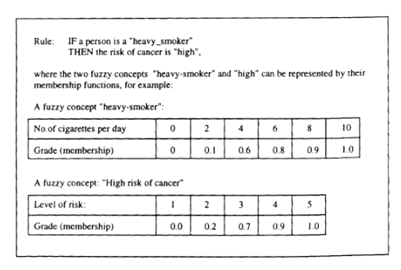SKEDSOFT
Introduction:-Fuzzy systems are rule-based expert systems based on fuzzy rules and fuzzy inference. Fuzzy rules represent in a straightforward way "commonsense" knowledge and skills, or knowledge that is subjective, ambiguous, vague, or contradictory. This knowledge might have come from many different sources. Commonsense knowledge may have been acquired from long-term experience, from the experience of many people, over many years.
There are many applications of fuzzy logic on the market now. These include control of automatic washing machines, automatic camera focusing, control of transmission systems in new models of cars, automatic landing systems for aircraft, automatic helicopter control, automatic air-conditioning systems, automatic control of cement kilns, automatic control of subways, fuzzy decision making, fuzzy databases,etc.
Many other applications of fuzzy logic in areas like control, decision-making and forecasting, human-computer interaction, medicine, agriculture, environmental pollution, cooperative robots, and so forth are in the research laboratories and are expected to enter the market.
The most distinguishing property of fuzzy logic is that it deals with fuzzy propositions, that is, propositions which contain fuzzy variables and fuzzy values, for example, "the temperature is high," "the height is short." The truth values for fuzzy propositions are not TRUE/FALSE only, as is the case in propositional boolean logic, but include all the grayness between two extreme values.
A fuzzy system is defined by three main components:
1. Fuzzy input and output variables, defined by their fuzzy values
2. A set of fuzzy rules
3. Fuzzy inference mechanism
Fuzzy rules deal with fuzzy values as, for example, "high," "cold," "very low," etc. Those fuzzy concepts are usually represented by their membership functions.
Case example. The Smoker and the Risk of Cancer Problem A fuzzy rule defines the degree of risk of cancer depending on the type of smoker. The problem is how to infer the risk of cancer for another type of smoker, for example, a "moderate smoker," having the above rule only. In order to solve the above and many other principally similar but much more complex problems, one needs to apply an approximate reasoning method. Fuzzy inference methods based on fuzzy logic can be used successfully. Fuzzy inference takes inputs, applies fuzzy rules, and produces outputs. Inputs to a fuzzy system can be either exact, crisp values), or fuzzy values. Output values from a fuzzy system can be fuzzy, for example, a whole membership function for the inferred fuzzy value; or exact (crisp), for example, a single value is produced on the output. The process of transforming an output membership function into a single value is called defuzzification.